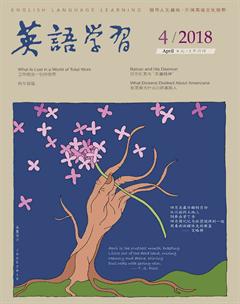声音,不只是听到的
By Pavlo Shopin

To make sense of human voices, we rely on senses beyond hearing. The songs of Taylor Swift can be sweet and soft. Lady Gagas singing feels dark. Johnny Cash2s voice was low and rough. Thats because voice is not just sound: it can be seen and heard, but also tasted and touched. The sound we hear in voice creates “multisensory images”—drawing in perceptions from many senses, not just one.3
The phenomenon of multisensory perception can help us to understand why we assign metaphorical properties of softness, roughness or depth to voice.4 Think of a politician whose voice is flat. Flatness is a multisensory concept because it is both tactile5 and visual. We can recognise flat surfaces by either touching or seeing them. These sensory impressions inform us about the acoustic characteristics of voice, implying that it does not have variation in tone.6 Notably, flatness can also convey lack of sympathy and emotion on the part of the speaker.
Softness is another common way to present the auditory7 perception of sound. Like flatness, it can describe not only the sound quality but also the speakers emotional state. And what about sharpness, a descriptor that might relate to both tactile and visual experience? Calling a voice sharp could be a metaphor for an aggressive, nasty8 speaker—or a means of describing acoustic, vocal sounds.
Multisensory images allow us to identify and deal with things that can harm or benefit us. A falling mortar shell, a jumping tiger or a skidding car are not just auditory or visual images:9 they are perceived as multisensory images and can be conceived of as potential life threats. In cognitive psychology, it is generally recognised that, as Vanessa Harrar of the University of Oxford puts it, “integrating information from individual senses increases the chance of survival by reducing the variability in the incoming signals, thus allowing us to respond more rapidly”.10 In fact, notes Harrar, when the components of the multisensory signals are simultaneous,11 our reaction time is fastest of all.
The psychologist Charles Spence at the University of Oxford has done extensive research on how humans integrate sensory information with respect to culinary experience,12 finding that vision and hearing can change how food tastes. One study found that desserts tasted sweeter on a white plate than a black plate. Another study found that heavy cutlery13 made food taste better.
The multisensory perceptions that result in metaphors help us to think about relatively abstract things with more familiar ideas. In Metaphors We Live By (2003), the linguist George Lakoff and the philosopher Mark Johnson, who devised “conceptual metaphor theory”, say that humans use concrete ideas to understand abstract phenomena.14 Linguistic and psychological research supports the idea that metaphors empower our abstract thought about time, money, morality, death and even orgasm.15 Time, for example, is an abstract idea, and we tend to understand it through the more concreteseeming16 experience of space: time can flow, and it can stand still. Our past is better left behind, because our future lies ahead.
Indifference or hostility are complex social concepts that can be conveyed through the experience of feeling cold.17 Coldness is tangible and vividly communicates the message. If someones voice is described as cold, people associate this sensory image with the emotional state of the speaker. In a similar vein18, the acoustic properties of voice can be associated with other sensory experiences. A sharp voice can refer to both vision and the sense of touch.
Depicting how something “feels” is one of the most common ways we use metaphors, especially when describing voices. That makes enormous sense because touch is a much earlier evolutionary development than speech, and is vital in daily life. In Consciousness and the World (2000), the Australian philosopher Brian OShaughnessy considered touch the primordial sense because “it is scarcely to be distinguished from the having of a body that can act in physical space”.19 And the evolutionary psychologist Robin Dunbar at the University of Oxford argues that touch plays a significant role in social bonding in primates20 (including humans). The integrative biologist Steven Phelps at the University of Texas draws on Dunbars research to argue that the use of touch for strengthening social relationships among primates appears to be 30 million years old.
Voice as a medium for language is a recent development in evolutionary terms, but it has become a crucial part of our social interactions. And it does not stand alone. We rely on a panoply of sensory experiences to navigate the medium of sound.21 The multisensory ensemble22 helps us to discuss a speakers emotions and feelings through the conveyance of voice, creating interior meaning through metaphor. Description of touch and other senses can illuminate23 voices deep meaning and its acoustic properties at once. Next time you hear a soft voice, reflect on the engaging feeling of softness that makes your experience so much more meaningful.24

1. multisensory: 多种感觉并用的。
2. Johnny Cash: 约翰尼·卡什(1932—2003),美國著名创作型乡村音乐歌手,多次获得格莱美奖。
3. draw in: 吸收;perception: 感知,感觉。
4. assign: 给予;metaphorical: 含比喻意义的;property: 特性,特质。
5. tactile: 触觉的,可以感触到的。
6. 这些感官印象让我们了解了这种嗓音的声音特征,表示其在音调上缺乏变化。acoustic: 听觉的,声音的。
7. auditory: 听觉的,耳朵的。
8. nasty: 恶狠狠的,冒犯人的。
9. mortar shell: 迫击炮;skidding: 打滑的。
10. 牛津大学的瓦妮莎·哈尔教授指出,认知心理学中一个普遍认同的观点是,“如果将不同感官感受到的信息综合到一起,就可以提高生存的机会,因为这实际上减少了输入信号的多样性,从而让我们更迅速地作出反应。”
11. component: 组成部分;simultaneous:同时发生的。
12. with respect to: 和……有关的;culinary: 烹饪的。
13. cutlery: 餐具。
14. Metaphors We Live By :《我们赖以生存的隐喻》,由美国认知语言学家乔治·莱考夫与心理学家马克·约翰逊合著,书中指出人们运用具体的概念来理解抽象的现象;devise: 想出,设计。
15. empower: 使能够;morality: 道德,品行;orgasm: 性高潮。
16. concrete-seeming: 看起来具体的。
17. indifference: 冷漠;hostility: 不友善,敌意。
18. in a similar vein: 同样,与此相同。
19. 在《意识与世界》一书中,澳大利亚哲学家布莱恩·奥肖纳西认为,“接触”是一种原始的感觉,因为“它几乎无法和人的身体在物理空间的行动区别开来。”primordial: 原始的。
20. a primate: 灵长类动物。
21. a panoply of: 多种不同的;navigate: 有效处理。
22. ensemble: 综合体,协调搭配起来的一整套事物。
23. illuminate: 阐明,解释。
24. reflect on: 回忆,思考;engaging:动人的,令人愉快的。

